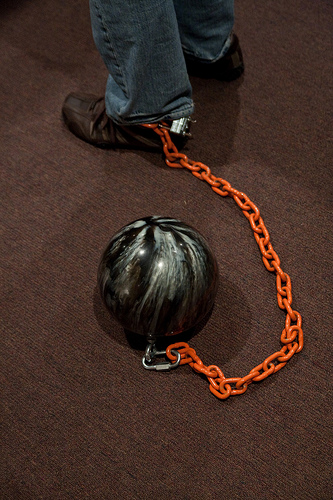Page loading time is an important metric used not only by search engines but extremely important to your readership. While we know you love your travel blog enough to wait 10 minutes for it to load, most people won’t stick around for more than a second or two before it’s on to the next thing. It’s difficult to build a successful travel blog, make money with one, or generate discussion without people ever making it to your site.

Keep in mind that there are some aspects of page loading time that aren’t easily changed, like your hosting provider, database setup, and theme – I’ll touch upon those for a bit and delve in deeper in the coming weeks. These changes below are meant to have a much more immediate effect but first you have to see how your site is doing in the first place.
Find Out How Fast (Or Slow) Your Travel Blog Is
 There are a number of good tools you can use to gauge how slow your site is loading and where there may be bottlenecks. Personally, I think it’s a good idea to run these tools and capture a screenshot so you can compare before and after results.
There are a number of good tools you can use to gauge how slow your site is loading and where there may be bottlenecks. Personally, I think it’s a good idea to run these tools and capture a screenshot so you can compare before and after results.
- Is My Blog Working? – The simplest interface to use, you’ll get a warning if your site is slower than average.
- Pingdom – Tells you how many seconds it takes to load a page, breaking down the results into individual components.
- Website Optimization – Not as pretty of an interface as Pingdom but good for detailed results.
- UpTrends – Lets you see how fast your travel blog loads from different places around the world.
For the most accurate picture of how zippy your travel blog is, run these tests at three different times of the day. Morning (local to your travel blog’s audience), during high-traffic times, and right after you publish a post or put a link up on Twitter.
 Resize Your Images
Resize Your Images
Pictures are larger files than text and take longer to load. While you might not have the patience to go back and edit all of your pictures, any of those hosted on your site should be resized before uploading.
- This might not be ideal for sites hosting high definition images but is advisable for most travel blogs.
Convert them to JPEG (if they’re not already) and reduce them to the maximum size of your blog page. For example, if your blog column is only 600 pixels wide, you can try resizing your images to 600 pixels to help keep them under 100kB.
 Look At Your Flashy Website
Look At Your Flashy Website
Giant photo headers, Flash animation, and widgets look nice but slow things down. Consider not running every graphic on your homepage and rather disperse those features across other pages of your travel blog. (You can also try scaling your header image down as described above.)
- Get Rid Of Unnecessary Plugins – Shut down any plugins you aren’t using or be selective and keep those you really want. Plugins that require frequent calls to your database (e.g. most popular, recent comments, etc.) are generally the biggest offenders.
- Blog Ranking Widgets – Cause a negative impact on page loading times and aren’t worth displaying on your homepage or sidebar due to that effect. If you don’t want to get rid of them altogether create a separate page or add them to a single existing one (e.g. ‘awards’, ‘statistics’, etc.).
- Limit The Number Of Posts On A Given Page – Especially on your homepage, don’t display your last 30 articles. Depending on how your travel blog is laid out, reduce this number and organize more efficiently.
- Clean Up Your Code – While your travel blog may appear good from the outside, the code running things may not be quite up to standard. You can check to see how many errors your site has using the W3C Validator. A good check to run, especially if you’ve done a lot of modification to your sidebar widgets.
Simple is usually faster and shaving off a few kilobytes here and there from images or getting rid of a widget can save you precious seconds of loading time. Also, if you happen to be running banner ads, ask the advertiser if you can download the image to host on your site rather than having the HTML code call it up from another server. Images hosted elsewhere can act as anchors if that other server is running slow it can drag your site down with it.
Cache Your Travel Blog
WordPress users can try either WP Super Cache (my simple overview) or W3 Total Cache to compress and cache their travel blogs. These plugins work by caching your popular posts so they don’t use your database – one common bottleneck. Either of these plugins are very customizable but even in their default configuration can have a very positive effect on page loading times within hours of installation.
Speed Over Style
While they’re not mutually exclusive, it’s in your best interests to have a faster site, even if that means it’s not quite as complex or pretty. Unless your hosting plan is up to par (and most aren’t) be selective and limit yourself to those plugins and visual elements that really matter to you. If your travel blog takes too long to load and few people will wait to see it at all.
[photos by: Nick Chill (roadrunner), Travis Issacs (wall of photos), jgarber (ball and chain)]

It’s like you read my mind! I often worry that my site loads too slowly and I wasn’t sure how large my photos should be. Thanks for pointing out the sites where I can test my speed.
It’s been a recent obsession of mine but I have to thank Gourmantic for giving me the idea for this post 🙂
As usual, great tips Anil! Thanks
My humble thanks 😀
Informative post as usual, Anil. And nice to get validation about the points I’m already following 🙂
The more I learn about speeding up a site, the more it seems we should stick to a basic theme with little graphics. Fine if it’s a simple blog or a diary. But if your site is a magazine style, and the layout and graphics are integral to the look and feel, you’re asked to compromise.
The W3C Validator does my head in every time so it ends up in the too hard basket! 🙂
It’s a delicate balance – I think the pattern is basic text blog > awesome flashy redesigned blog > awesome blog without all the flashiness. Or something like that 😛
Humm.. I quick check at ismyblogworking.com comes up with..
“Your blog is broken”
Back to the drawing board! Ha thanks for the headache 😉
Shows it’s working for me, just loading fairly slow (6-7 seconds).
Yeah it loads ok..just very slowly!
Got W3Total Cache installed, but the other day I had to deactivate it as my site wasn’t loading and a ‘Server 500’ error kept popping up.
My host said that my .htaccess file has been modified (which is fine), but I ripped it all out back to basics and it worked again. Just checking out your article on installing and setting up WP Super Cache, might give that a whirl and see if it speeds things up a bit.
There’s a part about changing permissions to ‘777’ on the .htaccess file. Can this cause any unexpected site blunders?!
Cheers again Anil
I should get a W3TC article up as well soon 🙂 If you can send me the settings you had I can take a look via email.
500 errors means the server has timed out; without knowing more it’s hard to say what the exact cause was. As for .htaccess 777 allows it to be writable to the Super Cache plugin; but once set up is complete you should be able to revert it back to 644. It can cause blunders – .htaccess is like a police officer directing traffic to incoming traffic – so if there is an error there, users may not get to the page requested or get an error instead.
I’ve read a few good articles and set a few things up to speed up the site. Cloudfire popped up a lot so I’ve integrated that.
I still get epic drop outs from the server. Like at the minute, I can access the back-end of my site to add a page, see comments etc(or lack of! ;)). But I cant load and see the homepage! Pingdom says the site loads after 30 seconds and ismyblogworking.com and it says it’s working fine. Could my .htaccess settings have anything to do with this? Or is it just my s**tty host?! (I can’t connect via FTP so I can’t tell you what my permissions are, but i’m 99.99% sure it’s set at 644)
If I get any more errors I’ll send an email over with my settings if that’s ok man. Thanks for the help again! 🙂
Stu
Just checked your site and
looks malformedon second reload it’s fine now 🙂 I checked your site on http://gtmetrix.com/reports/aminearlythereyet.com/8whGtqygIt could be host problems but more likely it looks like a plugin conflict. If it’s only the homepage I suspect it could be your slider. (Usually that’s the cause of a long time-to-first-byte which you are showing; it’s basically how long it takes to get a response from the server initially and for anything to appear on the page.) Keep in mind to turn off minify in W3TC (looks off) and turn minify on with Cloudflare. See if you can shave some of those plugins down too particularly anything running on your homepage only. Sliders are notorious for causing plugin conflict.
Feel free to send over any error reports via email. Good luck!
Thanks for that, GTMetrix is pretty cool! Tweaked a few more things thanks to that.
Had a nightmare with the slider, I used the Featured Content Gallery plugin. When I deactivated it, it totally broke my homepage, so I had to totally remove it. So I’m sliderless now! Do you know any good (lightweight) ones?
Think I’ve got too many plugin’s running too: Advanced Text Widget, Contact Form 7, Digg Digg, Linkwithin, SEO Friendly Images, Subscribe to Comments, WP Greet Box and Wordpress SEO.
They’re all pretty helpful!
Am I mental?! 😉
There aren’t lightweight ones unfortunately; they tend to be script heavy and can interfere with different plugins and themes. The best thing to do is purchase a custom one. They’re not very expensive and you can find a few good coders on the Facebook travel bloggers forum. That way you can be sure the slider is compatible plus get some nice customizations as well 🙂
And we all get plugin crazy, you’re probably in the minority as having a lot fewer than most! You can probably get rid of SEO Friendly Images by just adding the alt tag when you upload each photo to a post like this:
http://travelblogadvice.com/seo/how-to-create-and-use-the-alt-attribute-so-your-pictures-can-be-indexed-by-search-engines/
Hi man,
Slightly new development. My site was down very regularly at pretty much all times of day, so I mailed my host and this is what they came back with:
“Using caching within a shared environment can have an adverse effect in that it slows the performance of the site rather than speeding it up.
Can you please confirm if you have any caching plugins installed within your website. If so, can you please disable this function to allow us to troubleshoot your website performance issue further.
The following article can be of assistance if you are using Wordpress or Joomla
http://www.123-reg.co.uk/support/answers/Hosting/Website-Diagnostics/how-to-disable-caching-within-your-cms-software-3405/ ”
If you check that link, it goes on to say:
“System caching is primarily effective when the database and the content of your CMS application are both located on a single server (Normally found on a VPS or dedicated server). Using caching in the shared environment can have an adverse effect in that it slows the performance of the site rather than speeding it up.”
*Disabling caching in Wordpress*
In order to improve site performance for your Wordpress driven site, please ensure that all caching plugins are disabled on your site. You can disable the plugins by logging into the Wordpress admin dashboard for your site and disable any caching plugins found under the plugins menu.
The 2 most popular caching plugins used within Wordpress are:
WP-super-cache plugin.
W3-total-cache.
…
So I turned off Cloudflare, and the site has worked solidly ever since. I havent touched W3-total-cache yet. Are they right in what they say? Could my Cloudflare settings be wrong or something?
Cheers man!
You turned off Cloudflare completely, or just its site caching? Either way, with CF all of the processing occurs on their servers; not yours. It should effect the server. What can cause conflict is if you run minify on Wordpress with a plugin and use Cloudflare’s minify function.
As for the caching, it’s always a good idea to listen to your host but honestly that’s the first time I’ve heard such a thing.
Yeah I paused Cloudflare totally, and my site has been OK ever since…with the occasional 500 Server error, or database connection fault. I’m still running W3 Total Cache, and minify has always been switched off. I do have an error box that pops up though:
“It appears Page Cache URL rewriting is not working. If using apache, verify that the server configuration allows .htaccess or if using nginx verify all configuration files are included in the configuration.”
I really think it’s my host that doesn’t have things configured properly. I had a issue with a sub-domain that they simply couldn’t fix, and a quick search comes up countless issues other users have had with them. I think I’m just going to leave it now until I go home for a visit in a couple of months, then switch to a new, BETTER host! 😉 Fingers crossed on that one.
I might have to pick your brains about that in the future!
Thanks for all the help again Anil! I owe you one.
Stu
No problem at all! Good luck and feel free to let me know if you have any questions about a good host 🙂
Hi Anil! How’s it going mate? I hope you’re well.
Eloise and I are back in the UK for a couple of months, so I’ve got time to do a bit of website maintenance!
I’m after a new host that will allow me to use services like CloudFlare, and will let me host images on a subdomain… Do you have any tips?!
Thanks man.
Stu
Most hosts will work with Cloudflare but Media Temple has them integrated making setup easy. I use them for all of my sites and would strongly recommend them:
http://foxnomad.com/2012/06/29/the-technology-that-keeps-this-travel-blog-running-online-and-traveling-with-me/
Happy site optimizing!
Hi Anil,
Thanks for mentioning Uptrends in this post. Next to use Uptrends as a HTML Web Page Load Time Tester you might use Uptrends as website (or blog) monitoring tool as well. I invite you and your readers to try this tool 4 week for free by registrating for a trial account: http://www.uptrends.com/aspx/Signup.aspx
Regards Wilbur
Thanks Wilbur, what are the main benefits?
Hi Anil,
What about:
– You don’t have to install software – Uptrends is an hosted website- server- transaction and SLA monitoring service
– Uptrends has its own, fully redundant global monitoring network with over 100 checkpoints worldwide (one of the largest networks available)
– Monitoring from end user’s perspective
– Instant alerts by SMS, e-mail, RSS, IM – whatever you want 😉
– Screenshots technology
– Double verification of errors
Something else? 😉
Regards Wilbur
Hi Anil,
I am not tech Savvy but here is my situation. My webmaster removed W3 Total cache and the site went tumbling down. It was a page 4 on SERPs but now it is no where to be seen.
Can it be the reason for the low ranking? That he removed that?
Slow site speed perhaps.